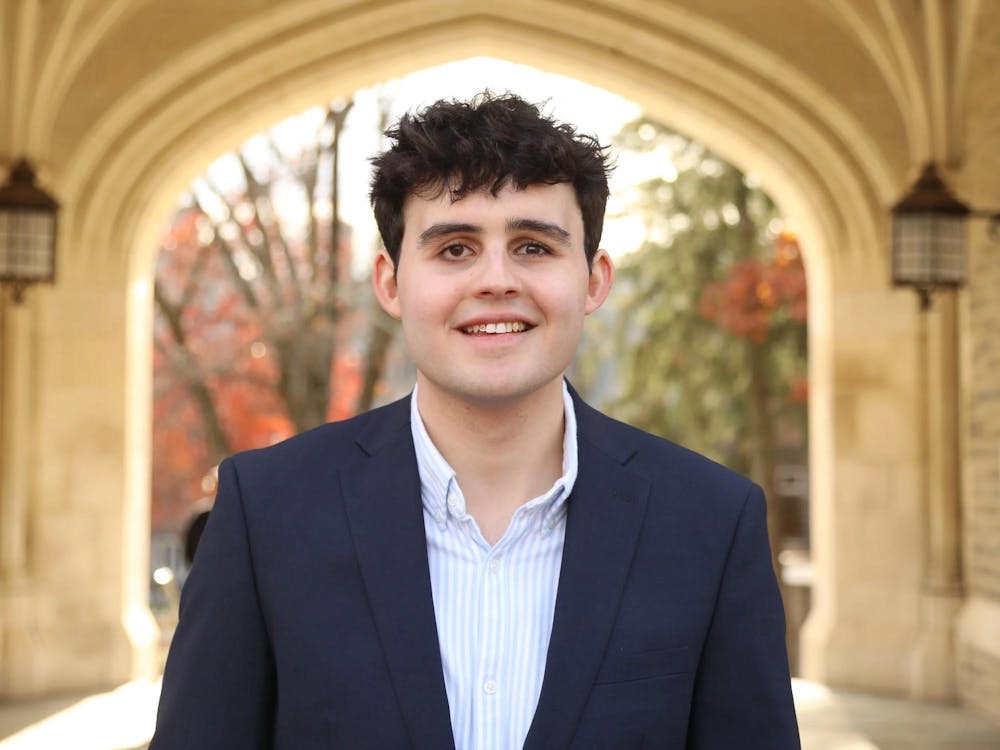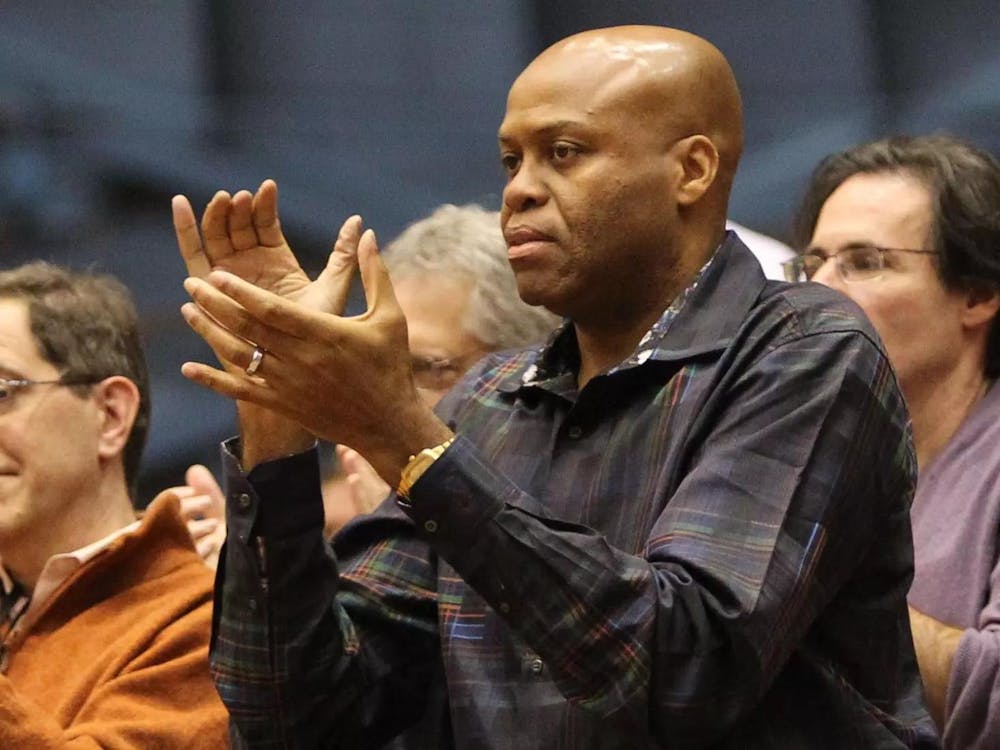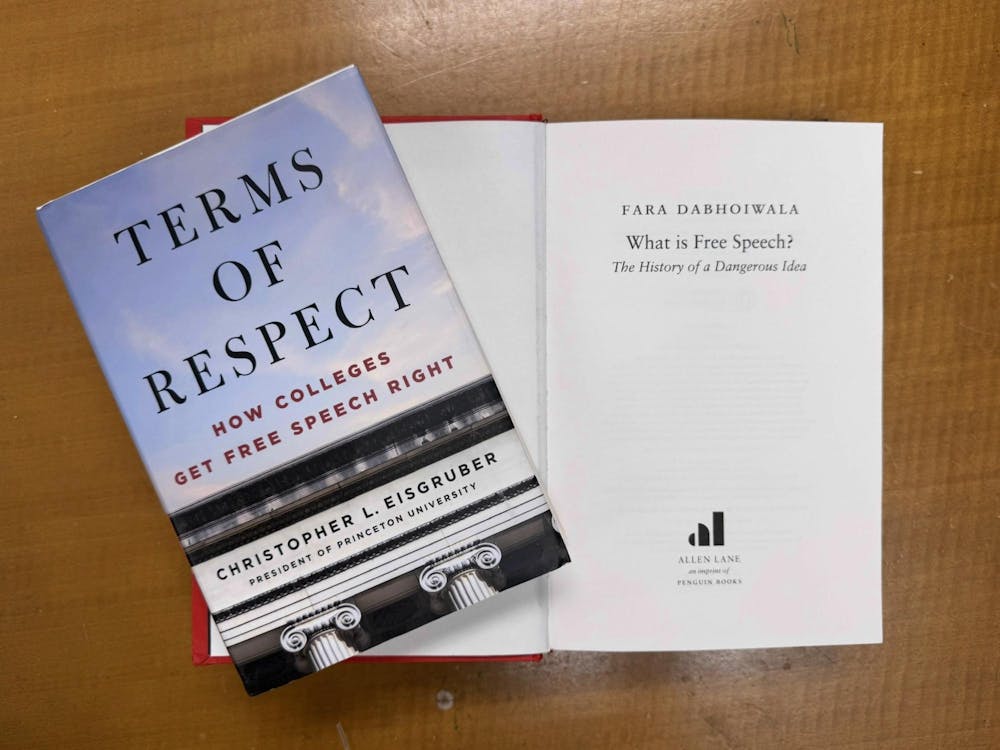It often seems that the offices of campus publications are dominated by social science and humanities majors, with a notable absence of engineers and science concentrators.
But several science majors and engineers are seeking to change that, carving a niche for themselves in the campus journalism community with a magazine dedicated to science and technology.
Yorell Manon-Matos '00 noticed that the University lacked a science journal from the moment he arrived on campus as a freshman.
"I wanted to learn more about science, but there was nowhere to go," he said. "You could read professional science journals, but you probably wouldn't understand them. There is no way to find out what is going on."
And so, Manon-Matos decided to found "Innovation", Princeton's first publication dedicated to science and technology, which put out its first issue in January. "I was not the only person who wanted to learn about issues and about what was going on in science," said Manon-Matos, who acted as the first issue's publisher. "I talked to people around campus, and I found an edge that I didn't know would be successful."
"Innovation" — a 32-page half-color magazine, full of flashy graphics and pictures, as well as a variety of article topics — is dedicated to covering science research that goes on within and outside the Princeton community.
"We wanted to put the spotlight on the effects of Princeton's scientific community, and there wasn't a publication dedicated to that on campus," said Abe Crystal '00, who was editor-in-chief for the first issue. "But we did not want it to be like a research report or a research digest."
The magazine's editors want to present science in terms that a general audience would understand, they said. "We didn't just want to cover purely science issues, but their social implications as well," said Derek Djeu '01, who was an editor for the first issue and has taken over as publisher for the next year. "We were aiming toward a general student audience. We did not want it to be too technical that someone not in the science field would not understand it, but we wanted it to be technical enough so that a chemical engineer could figure out what was going on in biology."
Carl Riccadonna '01, who also was an editor for the first issue and will act as editor-in-chief for the next year, agreed.
"It is not a magazine for engineers," he said. "Anyone should be able to pick it up and find articles that are interesting to them — freshman, seniors, English majors and engineers."
"Innovation," though a professional product with an organized staff, did have a rocky start. Manon-Matos started working on the journal during the spring of his sophomore year. It would be two years until he saw the product of his efforts.
As a junior, he worked with three friends to write a mission statement for the magazine. The group hoped to show readers the social implications of science, rather than simply the technical aspects of the field.

"I approached some of my friends about this during junior fall, and during the last two weeks before winter break, we argued over every word of the mission statement," Manon-Matos said. "It took two whole weeks to come up with three sentences."
The students then held their first meeting to assign articles and editing duties. "I was so impressed that people came to our meeting," he added. "We had nothing to prove, no final product to show."
The editors and staff members pushed to produce the first issue of the magazine by spring finals last year. Although they had half of the magazine laid out and two-thirds of the articles written, they were unable to complete it.
"We had to decide between finals and the magazine," Manon-Matos said. "And finals won."
The editors — with a few additions such as Riccadonna and Crystal — regrouped this fall to produce a magazine before the year was up. They recruited writers through the activities fair, picked a biotechnology theme for the first issue and sought advice from students who worked with "Business Today" and the "Nassau Weekly."
The editors then searched the University for funds to publish 2,500 copies of the first issue. They appealed to the President's fund, the Dean of Student Life and the engineering department. Overall, they received $5,000 to support their efforts.
"If there is one thing that I have learned from this experience, it is that if you want to do something on campus, you can do it," said Manon-Matos, who spent both his fall and winter break working on the magazine. "There are a lot of funds available for you. You just have to fish them out. Princeton is such a rich environment to live out your dreams."
After many all-nighters, the editors released the first issue before finals in January of this year, although they had hoped it would be done before reading period. The magazine contained new articles about both research being done on Princeton's campus and the results of scientific breakthroughs that affect the lives of students.
"It was such an intense project," explained Manon-Matos, who plans to write for the next issue. "It was my baby and everyone else's. I wasn't the only one losing sleep to see it born. There was the fear that people would lose motivation, that it might not work out, but the team's drive and dedication is what made it."
The new board of editors has already taken the helm of the magazine and is planning not only for the next issue, but for the future of the publication as a whole.
"I want to make sure that the magazine is an established institution at Princeton, that it won't fizzle out," said Riccadonna, who announced that the theme of the next issue will be microtechnology. "I want to increase readership, to produce more than two issues a year and to increase printing."
The editors also would like to expand the magazine to other universities, first by publishing articles written by guest columnists from other schools and then by distributing the journal at other schools. The editors are also looking for an office so they will not have to produce the publication in computer clusters and students' rooms.
"It is my dream that 'Innovation' will become an institution here, that it will be ingrained in Princeton," Manon-Matos said. "I think it will."







